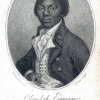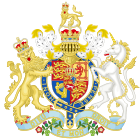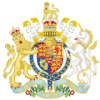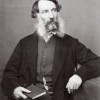Sample Timeline on Race
Created by Dino Franco Felluga on Fri, 06/12/2020 - 14:11
Part of Group:
This is a quickly constructed example of how to draw on BRANCH content to create a timeline at COVE.
Timeline
Chronological table
|
Date |
Event | Created by | Associated Places | |
|---|---|---|---|---|
| 9 Apr 1787 |
First settlers depart for Sierra Leone
Articles |
David Rettenmaier | ||
| Jan 1789 |
Interesting Narrative of the Life of Olaudah Equiano
Articles |
David Rettenmaier | ||
| 22 Jun 1802 |
Criminal Jurisdiction Act passed
Articles |
David Rettenmaier | ||
| 12 Jul 1819 |
Britain approves settlement scheme to South AfricaOn 12 July 1819, the British government approved £50,000 for a settlement scheme to South Africa's eastern Cape. Articles |
David Rettenmaier | ||
| 29 Aug 1833 |
Slavery Abolition Act
Articles |
David Rettenmaier | ||
| Dec 1849 |
Carlyle's "Negro Question"
Articles |
David Rettenmaier | ||
| 2 Oct 1865 |
George William Gordon executedGordon, a Jamaican former slave and elected member of the Jamaica House of Assembly, is executed by hanging after a court martial condemns him to death for his alleged role in encouraging the Morant Bay rebellion. Articles |
David Rettenmaier | ||
| 11 Oct 1865 |
Morant Bay Rebellion
Articles |
David Rettenmaier | ||
| Dec 1865 |
“Jamaica Committee”
Articles |
David Rettenmaier | ||
| 27 Mar 1867 |
Edward John Eyre indictment hearing
Articles |
David Rettenmaier | ||
| 11 Apr 1867 |
Nelson and Brand charges dismissedA Middlesex grand jury at London’s Old Bailey criminal court dismissed charges brought by the Jamaica Committee against Colonel Abercrombie Nelson and Lieutenant Herbert Brand for the murder (via illegal court martial) of George William Gordon at Morant Bay, Jamaica in October 1865. The trial was a result of the Morant Bay Rebellion of 11 October 1865. Articles |
David Rettenmaier | ||
| Jun 1868 |
Edward John Eyre acquitted
Articles |
David Rettenmaier | ||
| Jun 1870 |
Civil suit against Edward John Eyre nullified
Articles |
David Rettenmaier | ||
| 11 Oct 1899 to 31 May 1902 |
Second Boer War
ArticlesJo Briggs, “The Second Boer War, 1899-1902: Anti-Imperialism and European Visual Culture” |
David Rettenmaier | ||
| 17 May 1900 |
Siege of Mafeking lifted
ArticlesJo Briggs, “The Second Boer War, 1899-1902: Anti-Imperialism and European Visual Culture” |
David Rettenmaier | ||
| Jun 1901 |
Hobhouse report on Second Boer War
ArticlesJo Briggs, “The Second Boer War, 1899-1902: Anti-Imperialism and European Visual Culture” |
David Rettenmaier |







